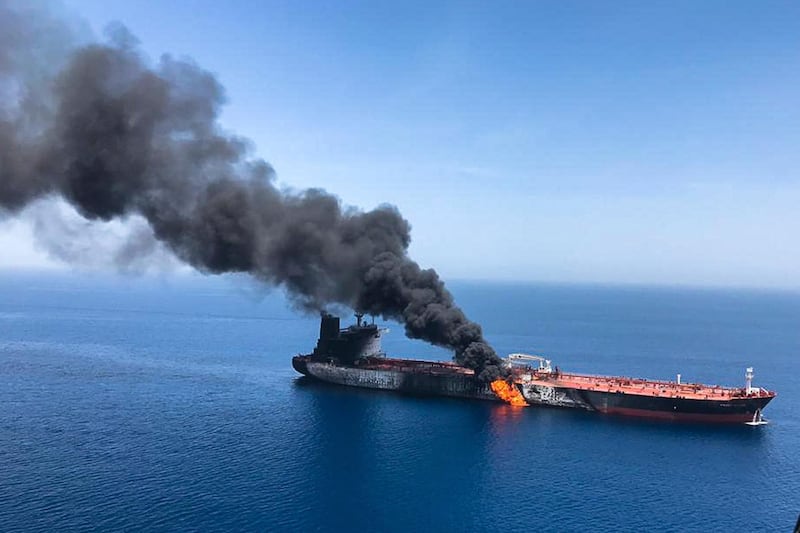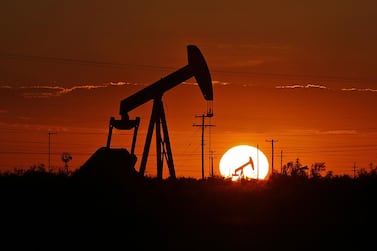Escalating war rhetoric, attacks on tankers and the downing of a US drone have increased the cost of shipping crude from the Middle East as geopolitical risks force high insurance premiums on maritime companies operating through the Strait of Hormuz.
"War risk underwriters are charging additional premiums for calls to the Arabian Gulf/Gulf of Oman," Bimco, the world's largest shipping association said in a statement to its members.
In contrast to earlier tepid reaction to rising tensions, oil prices rallied past $65 per barrel for Brent, with shipping underwriters charging a flat rate for all tonnage operating in the region, while others were levying on the basis of cargo, the vessel’s flag as well as port of call.
"Underwriters day top value is at present 1 per cent,” Bimco said.
Iran shooting down a US drone, which it claimed was flying in its airspace led to the White House preparing for retaliatory strikes on Thursday, leading to fears of a full-scale war in the Middle East. However, US President Donald Trump called off the strikes fearing civilian casualties in Iran, and his administration is set to slap on heavier sanctions against the Islamic Republic.
Escalating regional tensions, which have been building up following attacks on tankers transporting crude from the UAE and Saudi Arabia last week, triggered a rally in an otherwise bearish oil market, pushing shipping premiums higher. A third of the world's oil travels through the Strait of Hormuz, accounting for nearly 18.5 million barrels per day, of shipment, making the chokepoint a critical determinant for the oil markets.
Figures cited by Bloomberg suggest that shipment of an average 2 million barrel cargo from Saudi Arabia to China had doubled to almost $26,000 on Thursday, twice the usual rate, according to Baltic Exchange in London. Insurance rates also skyrocketed, with premiums averaging $180,000 following the incidents, compared to the going rate of $30,000 earlier this year.
"Although full details of the incidents are yet to be confirmed, there does appear to be a greatly increased threat to ships trading in the region,” said Hellenic War Risks Club, a mutual insurance company.
"It is likely that Additional Premium rates will increase with immediate effect,” it said.
Oil tankers navigating through the Gulf with highly inflammable hydrocarbon cargo have become increasingly vulnerable to threats posed from state and non-state actors in the region.
In May, four tankers including two belonging to Saudi Aramco suffered significant damage off the coast of the UAE emirate of Fujairah. More recently, two tankers one operated by a Japanese firm and the other by a Norwegian maritime company came under attack in the Gulf of Oman. US Secretary of State Mike Pompeo pointed the finger at Iran, which has in the past made threats to close the Strait of Hormuz.
While none of the attacks significantly moved the needle on oil prices by a significant proportion, they have nonetheless made transportation of crude, products and liquefied natural gas through the narrow chokepoint more expensive.
Oil, which had remained unresponsive to regional tension due to the US-China trade standoff and high US crude inventory is poised to climb higher.
According to Theodore Karasik, senior advisor at Gulf State Analytics in Washington, the consumer will ultimately have to absorb the higher risk premiums.
"Giving historical trends it is highly likely that shipping insurance costs will increase and already we are seeing higher premiums across the industry," he said.
"These will continue to rise unless they are addressed so that cost don't spiral. The loser here of course is the consumer ultimately."
Saudi Arabia and its allies within the Opec+ alliance who are set meet early next month remain determined to enforce production cuts through to the second half of the year, ensuring a tight market for the remainder of 2019.







